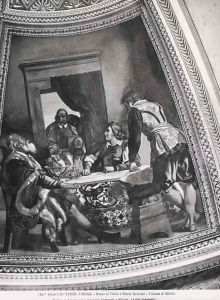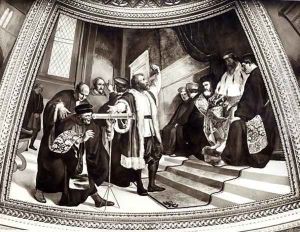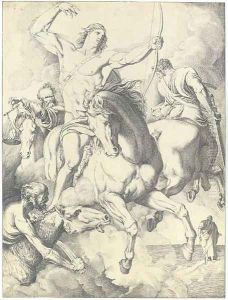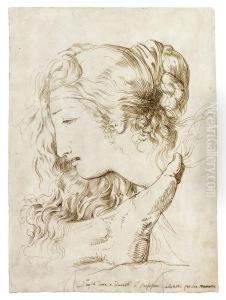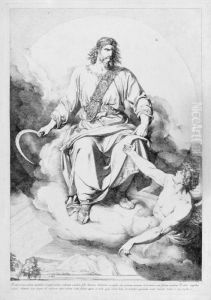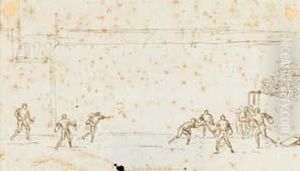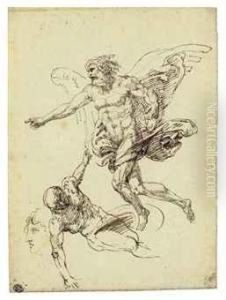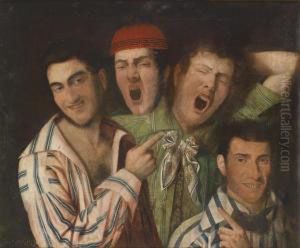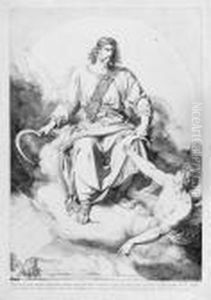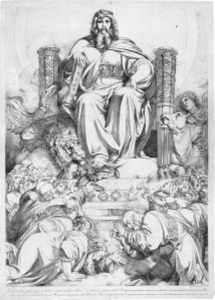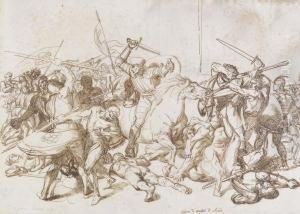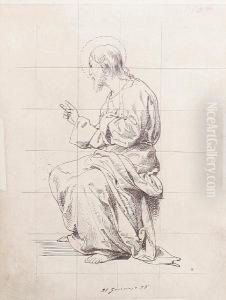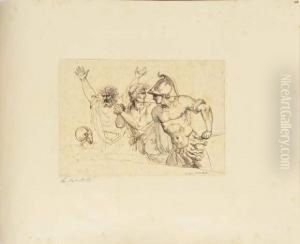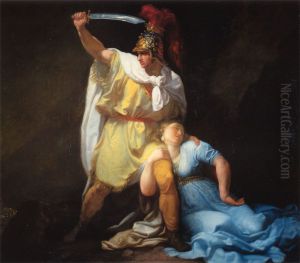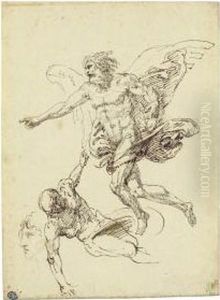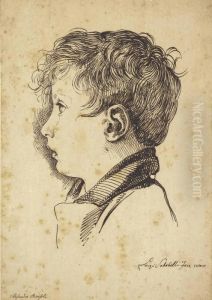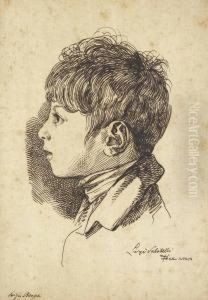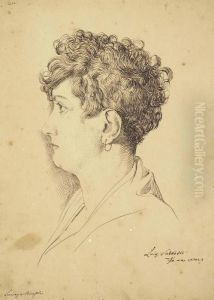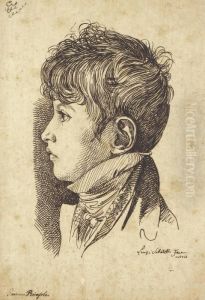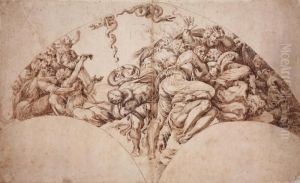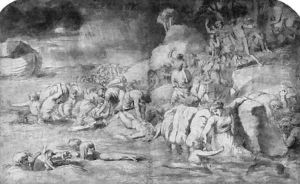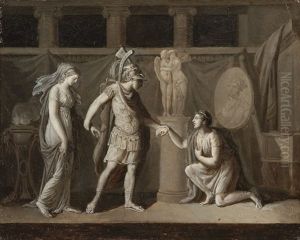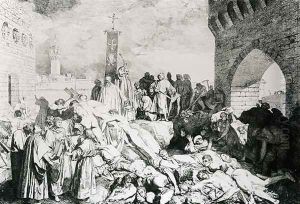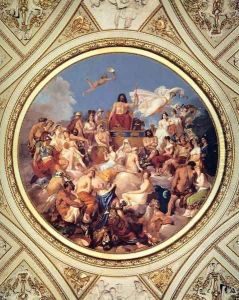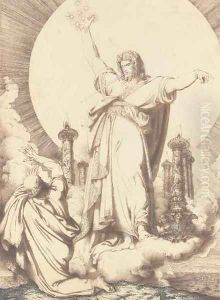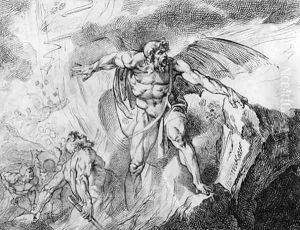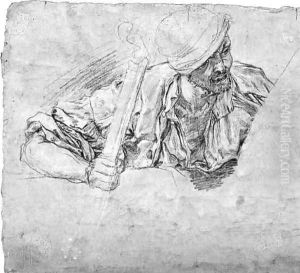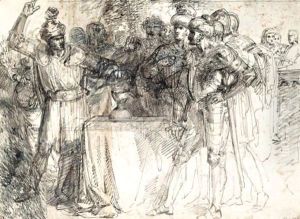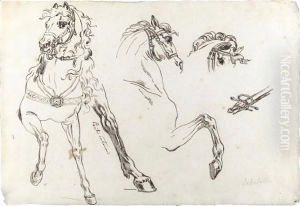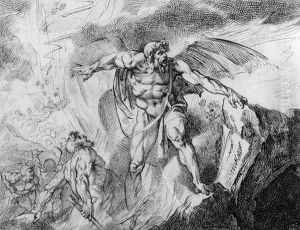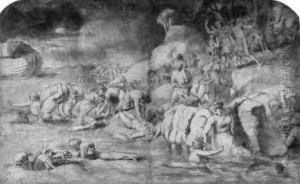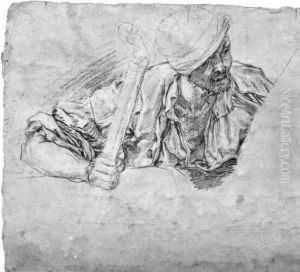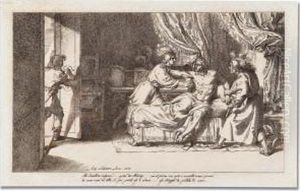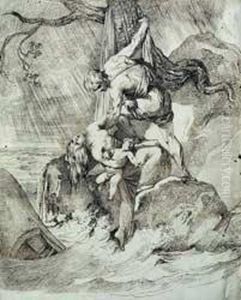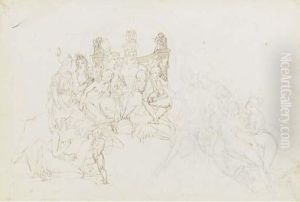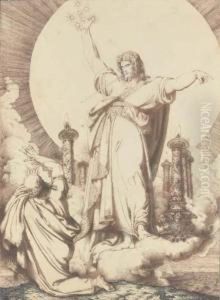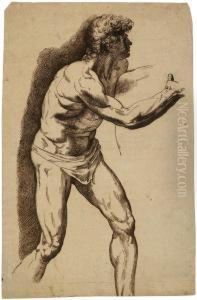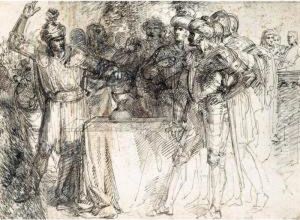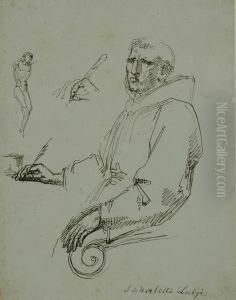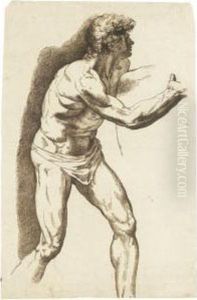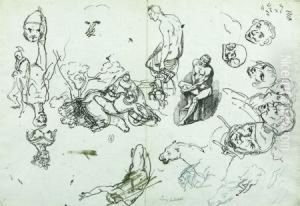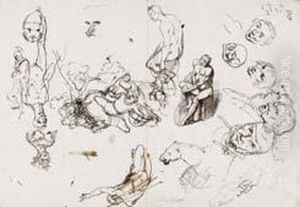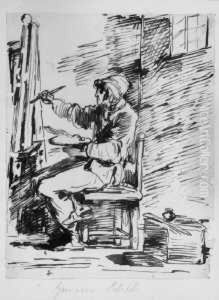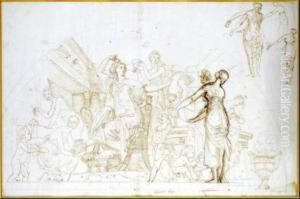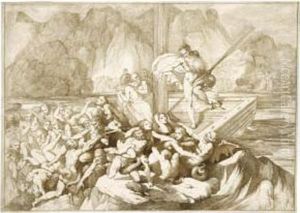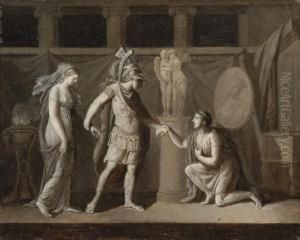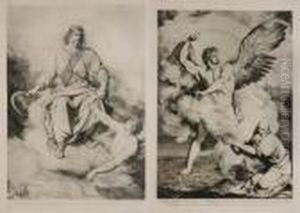Luigi Sabatelli Paintings
Luigi Sabatelli was an Italian painter and printmaker, known for his historical and mythological scenes, as well as his contributions to the Italian Neoclassical movement. He was born on February 21, 1772, in Florence, Italy, into an artistic family. His father, Gaetano Sabatelli, was also a painter, which provided Luigi with an environment conducive to developing his artistic talents from an early age.
Luigi received his early education in art at the Accademia di Belle Arti in Florence, where he studied under the guidance of several prominent artists of the time, including Giuseppe Piattoli and Pietro Benvenuti. Sabatelli's style was greatly influenced by the Neoclassical ideals of beauty, harmony, and historical accuracy, which were paramount in the late 18th and early 19th centuries.
Throughout his career, Sabatelli worked on numerous important commissions that showcased his skill in creating large-scale historical paintings. Some of his notable works include 'The Battle of Legnano', 'The Entry of Charles VIII into Florence', and 'The Death of Leonardo da Vinci'. His work was characterized by a dramatic use of light and shadow, strong compositions, and a vivid portrayal of human emotions.
In addition to painting, Sabatelli was also a respected teacher. He took a position at the Brera Academy in Milan in 1808, where he influenced a generation of Italian artists. His teaching emphasized the importance of drawing and the study of classical art, which were key elements of the Neoclassical style.
Sabatelli spent a significant portion of his life in Milan but returned to Florence later in his career. He continued to paint and participate in the Italian art community until his death on January 29, 1850. Luigi Sabatelli's legacy lives on through his contributions to Italian Neoclassicism, his influential teaching, and his masterful artworks that continue to be admired for their beauty and historical significance.
